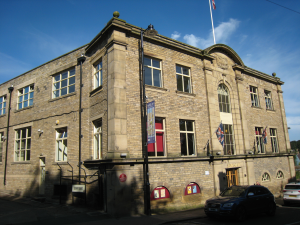 Transformed Leeds mill shows how historic Yorkshire buildings can be turned into ‘powerhouses for growth’- Laurie Magnus, Chairman of Historic England, says the North’s historic places are not just relics from the past. The North of England is like nowhere else in the world. Its heritage is a vital part of the area’s unique identity, reports The Examiner Live.
Transformed Leeds mill shows how historic Yorkshire buildings can be turned into ‘powerhouses for growth’- Laurie Magnus, Chairman of Historic England, says the North’s historic places are not just relics from the past. The North of England is like nowhere else in the world. Its heritage is a vital part of the area’s unique identity, reports The Examiner Live.
image: for illustration purposes only – by Chemical Engineer – Own work, CC BY-SA 4.0, https://commons.wikimedia.org/w/index.php?curid=65833121
… heritage sector adds £6.9 billion to the North’s economy and supports over 133,000 jobs…
…an engine for economic growth and social mobility…can improve people’s mental and physical health…
The Examiner Live writes:
The North of England is like nowhere else in the world. Its heritage is a vital part of the area’s unique identity.
The North was a far frontier of the Roman Empire, the birthplace of English Christianity and the cradle of the Industrial Revolution.
Northern heritage is all around us – from historic houses and terraces, to churches, mosques, castles, landscapes, ancient monuments and monumental textile mills.
The vast majority of these sites, while often privately owned, can be freely enjoyed. Heritage is also a dazzling economic asset, yet often overlooked and taken for granted.
The heritage sector adds £6.9 billion to the North’s economy and supports over 133,000 jobs. Our stunning heritage provides a link with our collective past. Much of it is beautiful and inspiring.
However, historic places are far from just relics of the past. They provide a foundation here and now for our sense of shared identity, something even more important in the wake of the Covid-19 pandemic.
Lockdowns resulting from Covid-19 have inevitably damaged the heritage sector’s delicate ecosystem, much of which works with tight margins and limited financial reserves.
The pandemic has placed the extensive heritage support network under huge strain. This includes highly skilled workers such as carpenters, conservation architects and stonemasons, many of whom were impacted through works being put on hold due to loss of revenue at heritage sites.
Why more women should be considering a career as a tradesperson
For plumber and gas heating engineer Rachel Shorter, educating female school leavers is vital to encourage girls to consider the trades as a viable career option.
Rachel is one of a small percentage of women in skilled trades – six per cent, while just one per cent of electricians are female.
She is one of several female led businesses that can be found on Local Heroes, a company backed by British Gas that matches homeowners with tradespeople in their area.
For more details about Rachel and Local Heroes click here
Help has come from the Government’s Culture Recovery Fund, a record-breaking rescue package which has supported the heritage sector during the pandemic and as the nation re-opens.
Historic England has already distributed over £14.3 million in the North from the Culture Recovery Fund for major programmes of repair and restoration.
Cherished historic places from castles to churches, ballrooms to beautiful landscapes have received life-line grants.
Work has already taken place at sites as colourful and varied as Blackpool’s iconic Tower Ballroom, the stunning Georgian landscape at Gibside in Gateshead and the tranquil Thornton-le-Beans Chapel in North Yorkshire.
The latest funding round will continue to support projects carried out by specialists across the North…
Heritage can be an engine for economic growth and social mobility, and engaging with heritage can improve people’s mental and physical health. The Government has recognised this with funding for our High Streets Heritage Action Zone scheme.
In Northern England, this programme sees 26 historic high streets from Hull to Barrow-in-Furness receive almost £33million of investment over four years to boost local economies and breathe new life into old places.
A critical feature of these schemes is that they are locally led. They involve effective partnership between councils, businesses, charities and community groups, with external support from Historic England, and from the Arts Council and The National Lottery Heritage Fund on the Cultural Programme we are running as part of the scheme.
Investing in our historic high streets raises enthusiasm for local history and cultural engagement. Restoring buildings improves the quality of the environment. This in turn attracts economic activity though new jobs and investment created as people choose this as a desirable place to live and work – creating a virtuous circle of regeneration.
The North’s historic textile mills provide a notable example of regeneration in action….
The Government’s new Levelling Up Fund prospectus recognises the value of culture and heritage to bring people together and strengthen communities in places which technology and innovation have at times left behind.
And at regional scale, the York & North Yorkshire Local Enterprise Partnership has just published a report, jointly commissioned with Historic England, demonstrating the historic environment’s potential to benefit people, places and the economy.

